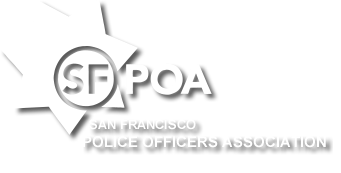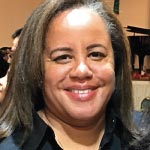Reviewed by Dennis Bianchi
Approximately three years ago, retired San Francisco Police Department Sergeant James R. Pera published a novel titled, The Rampage of Ryan O’Hara. Within those pages a young man, Ryan O’Hara, goes about the United States of America wreaking havoc in the name of his murdered grandfather, a San Francisco Police Department Sergeant, murdered on duty by radical terrorists. The avenger is an Army Green Beret, suffering not only physical wounds but also serious psychological scars. The murder of Ryan O’Hara’s grandfather was based on a factual incident that took place in San Francisco. Mr. Pera was working the streets of San Francisco during the years when many murders of San Francisco police officers took place, as was I. If one visits The California Peace Officers Memorial in Sacramento you will see that within a 12-month period beginning at the end of 1969 to the end of 1970, five San Francisco police officers were murdered. What is not seen there were the numerous failed attempts of murdering peace officers throughout the State of California, nor the hundreds of attempts that took place across the United States of America in the early 1970s. The subject of this book, Days of Rage, is a sincere attempt to describe who was responsible for these murders, and what were the circumstances of that dark era.
The author, Bryan Burrough, is a special correspondent for Vanity Fair, a former reporter for The Wall Street Journal, and the author of five books, including Barbarians at The Gate, and Public Enemies: America's Greatest Crime Wave and the Birth of the FBI, 1933-34. The last was adapted to film in 2009.
This book was difficult for me to review objectively. Mr. Burrough has clearly made an honest attempt to give us a comprehensive look at the violent would-be revolutionaries operating in the United States during the late 1960s to the mid-1980s. He addresses the major groups such as Weather Underground (initially known as Weathermen), the Black Liberation Army, the Black Guerilla Family, the Symbionese Liberation Army and the Fuerzas Armadas de Liberacion Nacional Puertorriquena (F.A.L.N.). He attempts to touch on smaller groups such as The United Freedom Front, that either disappeared or were swallowed up by the major groups. The author used what has been made available to previous authors regarding this era, and he has added to his research numerous interviews of people belonging to those groups who had not previously spoken publicly about their actions and involvement in the indefensible murders and bombings throughout the United States. What made it difficult for me to be objective was the recurring thought: “These people were actively trying to kill me and my co-workers for several years, and their reason was nothing more than I was a police officer.”
The incidents described in the book that took place in San Francisco came back to life in my mind: The night that Anthony Bottom and Albert Washington opened fire on then Sergeant George Kowalski in the Mission District: the bombing of Park Police Station and murder of Sergeant Brian McDonnell: the assassination of Sergeant John V. Young at Ingleside Police Station: the two separate attempts to destroy Mission Police Station by means of dynamite and high-powered automatic weapons, were all instances in which I was working and with officers I knew personally. I was a new young officer assigned to Mission Station in 1970 and John “Jack” Young was a day-watch officer I would see at least once or twice a week. He was always a voice of reason, of calm, a most valuable guide for any new cop. He was careful with his language and a good listener. He was a police officer interested in the public welfare, to protect and serve. The book reminded me that two of the men who assaulted the station on the night they murdered Sergeant Young had pled guilty to voluntary manslaughter. The others involved in the assault were convicted of nothing. Many officers who worked for Sergeant Kowalski, myself included, would say he was a great role model, dedicated, fair and unafraid. It should be easy to understand why this book was not an easy read for me. But there is much to learn in these pages.
Perhaps because the F.A.L.N. operated in Chicago and New York I was unfamiliar with them, but their bombings produced more deaths than any other group. They also, apparently, bullied church groups into presenting themselves as dedicated people striving to improve the lives of the poor. Evidence is presented that they were in fact influenced by and involved with Cubans from Fidel Castro’s military.
As a matter of fact, most, if not all of the people involved in the various groups were not misguided flower children or fringe hippies. They were dedicated communists whose members included bombers, bank robbers, kidnappers and murderers. Many laid claim to the statement that they had formed as a group to end the war in Viet Nam, others to overthrow the government in general. "What the underground movement was truly about -- what it was always about -- was the plight of black Americans," writes the author. The book states that in 1972 alone there were over 1,900 domestic bombings in the United States. If that figure seems too high, Mr. Burrough will point out to you the is in line with the bombers frequently lining up several bombs to be detonated at or near the same time on the same day. On one day alone, in New York City, 100,000 people were evacuated due to bomb threats. The 1970s were a different time. There was no one checking folks at the door before they entered government or private buildings, there were no metal detectors. There was very little intelligence gathered as to who these violent radicals were.
One constant among the radical terrorists was that they were constantly in need of funding. Many of them robbed banks. Some, like the Black Panthers, often robbed drug dealers, of which they openly bragged about as it accomplished two goals: more funding for things like dynamite, and it took some drugs off the streets.
The Federal Bureau of Investigation is not always presented in a favorable light in this story. What struck me was the lack of cooperation not only between the FBI and local police but, also, within the Bureau itself. When agents in the United States were seeking assistance from agents in Puerto Rico the book reports that the agents on the island had no interest in helping out, as, in their words, “The bombs aren’t happening here (in Puerto Rico). It’s your problem.” Many agents, however, were grinding out plenty of hard work that paid off in arrests.
The description of the Patty Hearst kidnapping and following investigation and events brought back many memories of San Francisco being the scene of the surreal.
As a retired police officer, I found these tales of urban terrorist murderers incomprehensibly repugnant, some more so than others. There are many of them wandering about in our midst today, which is not just difficult to accept but also to understand how this could be. An example occurred recently when a bailiff in the San Francisco Sheriff’s Department let me know that Bill Ayers had visited his courtroom. Mr. Ayers and his wife, Bernadine Dohrn, had adopted Chesa Boudin after Mr. Boudin’s parents were convicted for the murder of two police officers during a robbery of a Brink’s armored car and imprisoned. Mr. Boudin is a lawyer, and member of the San Francisco Public Defender’s Office. Mr. Ayers, like the young Mr. Boudin’s biological parents, was a member of the Weather Underground. He has become known more recently as an elementary education theorist. He had apparently dropped by to make a social call on his adopted son who was assigned as a defense lawyer. The book helped me recall that Mr. Ayers and Ms. Dohrn, as members of the Weather Underground were responsible for the bombing of the United States Capitol, the Pentagon and several police stations in New York. That group was also responsible for the explosion in Greenwich Village that killed a member of their own group. A reviewer of this book, Mr. Maurice Isserman, summed up the situation rather well. “Building durable institutions and movements for social justice is hard. Unfortunately, acquiring dynamite and blowing things up is easy.” If there is one clear theme, other than the absurdity of the radical groups’ ideas of overthrowing the government of the United States and the evilness of their violence, is that they accomplished almost nothing. If anything, their stated goal of, “…the destruction of US imperialism and the achievement of a classless world: world communism.” has brought about a more cautious and conservative country. The book contains valuable information but I have two complaints. The author tried to cover too much history in one volume. It seemed to me that he would have been much better off limiting himself to only one group or two. For instance the Weather Underground and the F.A.L.N. had ties. Those two groups alone would have made a great 600-page read. Instead, the author spends too much time on minutiae such as how numerous bombs were constructed and how suspects used certain driving techniques to evade law enforcement tails. The other problem is, while over-explaining some things, he fails to give details or in-depth explanation of causes or context for the events. The author seemed to strive for balance, but it is clear that he aligned himself much more with law enforcement than the violent radicals. For those of us who lived through this time period, many memories will return, most of them bad. For those younger, this book will serve them well, at least it will give them a basic idea of how dangerous the times were and, perhaps, why resorting to violence will ultimately fail.

